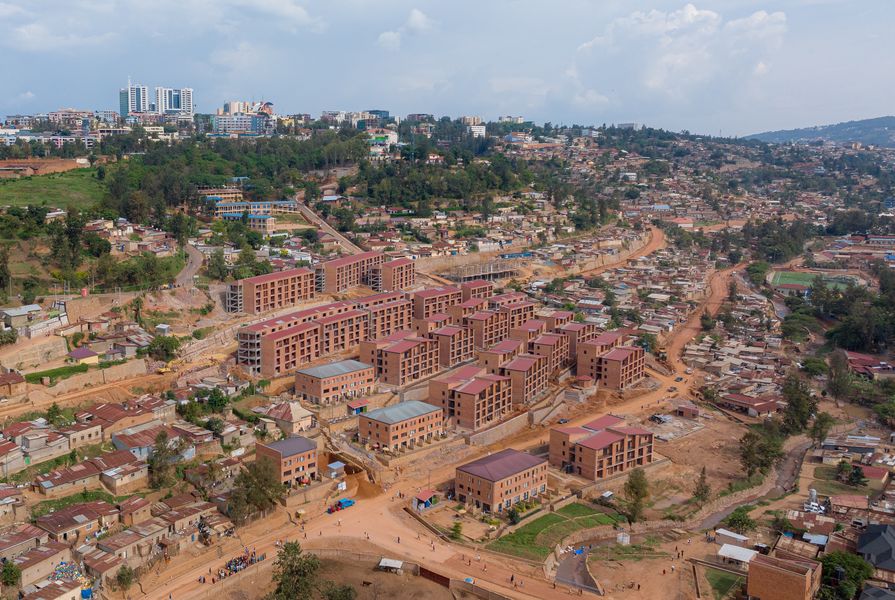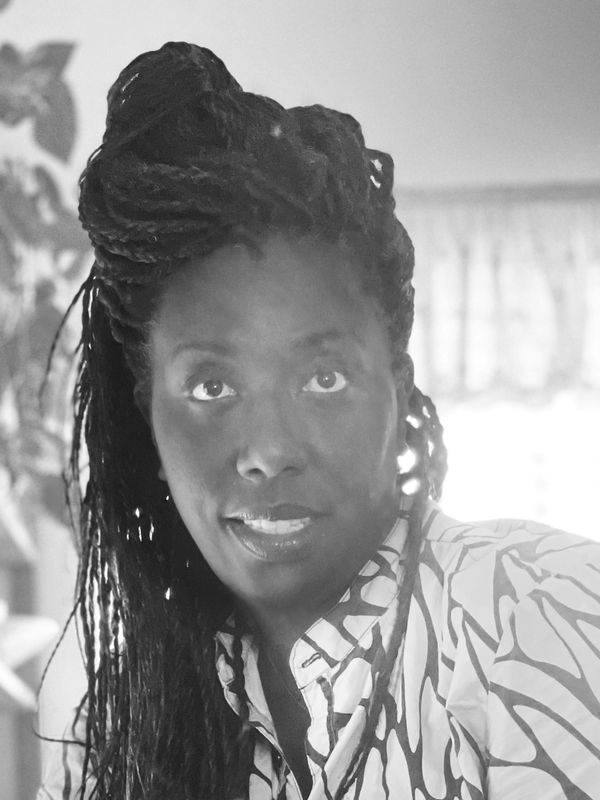Cities are often depicted as engines of prosperity, yet across Africa, a paradox exists: urbanisation accelerates, but economic resilience stalls. Cities rise while supply chains fracture; raw resources are exported as finished goods are imported. Confronting this disconnect stands Fatou Kiné Dieye, a Rwanda-based consultant whose career defies easy categorisation. Trained as an architect and urban planner, she has spent over a decade designing not just buildings, but the policy frameworks and supply chain mechanics necessary to build Sub-Saharan Africa’s next generation of sustainable, inclusive cities. From leading a Swiss Cooperation’s construction industry transformation program across Africa’s Great Lakes region, to directing affordable housing strategies for the City of Kigali, her work bridges the gap between global sustainability rhetoric and ground-level pragmatism. Perhaps surprisingly, for Australia, her insights are not just provocative – they’re a survival manual.
When Fatou chose to forgo a traditional architecture internship to dissect the lifecycle of a pink shirt at Gap Inc., her peers may have seen it as a detour. Yet this unorthodox pivot tracing the lifecycle of a shirt from design to global retail – would become the intellectual scaffolding of her work in Rwanda, where she now confronts one of the defining paradoxes of our age: how to build cities that function as economic accelerators, not liabilities. “Buildings aren’t just structures; they’re the sum of policies, supply chains, and economic logic,” she says. This radical redefinition of architecture, forged in the heart of Africa’s hypergrowth urbanisation, is both a technical adjustment and a philosophical reckoning. For Australia, a nation clinging to the myth of perpetual resource wealth while its cities buckle under speculative excess, her work is an impetus: architecture must evolve from a discipline of aesthetics to one of systemic orchestration.
Rwanda’s urban population grew faster than any nation’s between 1998 and 2018, yet its GDP flatlined – a dissonance Fatou attributes to a disconnect between urban growth and industrial capacity. “Asia industrialised alongside urbanisation. Here, urbanisation outpaces industry. We’re building cities without engines,” she explains. By 2060, Africa will construct three times the floor area of China and India combined, but without localised material ecosystems, this growth risks becoming a debt-fuelled illusion. One of her responses, the Rwamagana District Eco-Industrial Park, rejects the Global North’s cargo cult sustainability. While foreign advisors pushed imported solutions like bamboo and recycled plastics, Fatou prioritised stabilised soil blocks and phased recycling. “Bamboo sounds green until you realise there’s no supply chain here yet – no factories, no skilled labour. Sustainability isn’t aspirational; it’s applied”. The park operates on strategic incrementalism; recycling scales only when waste streams and policy align, avoiding the hypocrisy of token greenwashing.
Australia’s economy suffers a parallel pathology. We mine iron ore but import steel. Rwanda digs clay but imports cement. Both nations are trapped in a system that exports raw resources while importing finished goods – a pattern Fatou critiques as a failure to convert wealth into value. This dynamic, akin to a quarry mentality, leaves both countries hostage to volatile global markets. Rwanda’s reliance on foreign cement mirrors Australia’s dependence on Chinese steel: a surrender of agency disguised as pragmatism. “It’s not a technical problem. It’s a failure to imagine systems rooted in what we have.”
Fatou’s battle with seismic code and regulation exemplifies architecture’s untapped frontier: policy as a design tool. Rwanda’s original building regulations, copied from Europe, mandated unreasonably robust structures – a standard that rendered affordable housing impossible. “Policy isn’t neutral. A wall thickness dictates who gets housed and who doesn’t.” Revised rules balance safety with economic reality, proving that technical standards are inherently ideological. In Australia, similar dynamics plague sustainability efforts. British-derived codes mandate half-metre-thick earthen walls in deserts – a standard designed for English rain, not Australian aridity. Copy-pasting regulations isn’t just lazy; it’s intellectual colonialism. The unexamined adoption of Eurocentric norms, whether seismic codes or sustainability metrics, perpetuates exclusion. “When you design for a fictional global standard, you design for nobody.”
For Fatou, transforming cities into engines of equity requires architects to abandon siloed design and embrace policymaking as a core competency. In Rwanda, she brokers between donors fixated on abstract ideals and officials wedded to outdated methods, reframing debates about sustainability through a lens of economic self-interest. “External partners often push solutions untethered to local realities. I show them stabilised soil employs more people, costs less, and works,” she says. This approach transcends geography. In Australia, where reliance on imported steel and volatile global markets mirrors Rwanda’s cement dependency, her model demands systemic shifts: tax incentives for retrofits, zoning laws that penalise demolition, and procurement policies privileging local supply chains. “Architects must stop apologising for pragmatism,” she argues. “Circularity isn’t a buzzword – it’s survival.”
Fatou’s most urgent lesson lies beneath the surface. “In Rwanda, hills are Swiss cheese unmapped pit latrines, erratic water tables. Build without understanding that, and cities collapse,” she warns. This subterranean crisis reflects Australia’s, where floods and fires expose decaying stormwater systems and brittle energy grids. Her ideal project – a GIS platform mapping Kigali’s subsurface networks – would transform vulnerability into strategy. “If politicians saw sewers layered with property titles, they’d design differently.” For Australian architects, this subterranean imperative is existential. Climate collapse demands designs that integrate flood corridors, fire buffers, and aquifer recharge zones – systems invisible to the untrained eye. “Architecture’s obsession with the visible is a historic blind spot. The future is underground.”
Fatou’s work rejects architecture’s complicity in the quarry mentality – the extraction and export of raw resources, whether minerals or human capital. “Our role isn’t to chase aesthetics, but to engineer value loops – cities that produce more than they consume.” In Rwanda, this means cities rooted in clay and labour, not foreign debt. In Australia, it demands dismantling the myth of endless mineral wealth to prioritise self-sufficient supply chains. The profession’s survival hinges on a paradigm shift. Architects must become fluent in policy, logistics, and subterranean engineering – not to disrupt, but to orchestrate. “A building is the end of a process,” Fatou concludes. “If you don’t understand the process, you’ve already failed.” For Australia, clinging to resource complacency, and Africa, racing against urbanisation’s clock, the mandate is clear: architects must redefine their role as system builders. Start with what you have, not what you wish you had. Design the engine, not just the car.
Fatou is a consultant specialised in the design of buildings, policy frameworks and the corresponding supply chain mechanics necessary for building Sub-Saharan Africa’s next generation of green and inclusive cities. She was previously the managing director of Skat Consulting’s offices in Rwanda, Burundi and DR Congo, responsible for the implementation of the Swiss Cooperation’s construction industry transformation program for Africa’s Great Lakes Region. Prior to joining Skat, Fatou was team leader for the Affordable Housing and Neighborhood Development Unit for the City of Kigali and an urban designer for the New York City Department of City Planning.
Fatou holds degrees in architecture, urban planning, and sustainability management from Princeton and Columbia Universities and a certificate in International Housing Finance Systems from the University of Pennsylvania’s Wharton School.
Fatou Kiné Dieye will appear as a keynote speaker at the 2025 Australian Architecture Conference, to be held in Sydney from 2 to 3 May. See the full program and purchase tickets on the Australian Institute of Architects website. Following the conference she will deliver a keynote lecture on 13 May at the University of Melbourne.



















